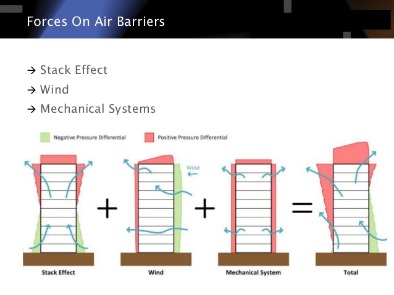
The Stack Impact
If you’ve bother maintaining your own home heated or cooled, or should you really feel your HVAC systems are working overtime and utilizing too much vitality, your own home may be experiencing stack effect. Complex air flow techniques are the best selections to be included in many constructions relying on the air flow parameter. Sometimes pure convection needs help to be efficient, and many various ways are the instruments that should be considered in designing. Stack towers enhance the buoyancy results by mounting the next half on the roof of the building. Placing a tower on tall buildings would help the ventilation in decrease shops too. Design and installation of stack air flow techniques are very sensitive, and much care and caution must be utilized to forestall over and under air flow.

When No Fire Is Burning, Cold Air Is Leaking Into the Home Through the Chimney.When this problem occurs, the stack effect has triggered a backdraft of cold outdoor air out of your fireplace. You can also discover smoky odors from the chimney exhaust air that has entered your home via the hearth. To save space, many chimneys are designed with an exterior wall; however, top-of-the-line ways to utterly avoid the stack impact is to put in the chimney inside your own home. This design keeps your chimney in a heat surroundings with no publicity to cold out of doors air. And those leaks will affect your consolation in summer season, too, when your under-insulated attic heats your upper flooring whereas your cool, conditioned air flows out the same areas where cold air was pulled in all winter.
The Stack Effect: How Winter Affects Your Chimney
The uncertain driving forces of natural ventilation alongside difficulties in total control of airflow can deem pure ventilation not environment friendly sufficient in some cases because of sure climates. – Unacceptable charges of ventilation and airflow on the higher flooring of tall, massive buildings could occur with stack impact air flow. Trapped, stale air could lower air quality, and the addition of working windows may be needed to ensure sufficient ventilation. – Stack impact ventilation in buildings can lead to over-air flow or beneath-ventilation because of its dependency on pure forces. Excellent design and airflow regulation are important for sustaining acceptable rates of air flow. Designing natural ventilation can turn into extraordinarily advanced due to the interplay between cross ventilation and the stack impact in addition to advanced building geometries and complicated distribution of openings.
- A building with a high-temperature process will warmth the air up to a higher temperature, causing it to rise quicker.
- Wind-assisted and solar-induced methods are primarily based on clean energy and price-environment friendly.
- –Stack impact ventilation allows building ventilation and cooling at lesser working and maintenance costs than mechanical systems can achieve.
- Clients and designers trust him to supply code compliant, energy environment friendly techniques throughout the U.S.
- In many instances the issue, whereas pretty common, isn’t broadly understood — it’s often known as stack effect.
- As the warmer air rises, it creates a strain distinction, with decrease pressure below and better pressure above.
At the building prime, unfavorable pressure attracts denser, colder exterior air through low-degree openings in the structure. Although the effect of this process is comparatively weak, it may be concentrated when a stack is carried out. An increase in airflow could be completed with use of longer stacks. In winter, heated air rises toward a constructing’s ceiling, setting up a situation very very like that of a hearth, however with a lot smaller temperature extremes. Ground degree openings like doorways and home windows permit the cold, exterior air to rush in and displace the warm, rising air, whereas higher-degree openings permit heat air to escape.
Shortfalls Of Mechanical Ventilation
Stack air flow may be particularly efficient as a method of naturally ventilating tall buildings that embrace vertical spaces which rise throughout their top, for instance buildings with central atriums. This can be useful in deep buildings, the place cross ventilation will not be sufficient to penetrate to spaces in the coronary heart of the constructing. Cooler outside air is drawn into buildings at a decrease level, it is warmed by sources of heat inside the building , and then rises by way of the constructing to vent out at a better level. When You Open Your Fireplace Doors, Smoke Blows Into the Room.When the stack effect restricts your chimney’s exhaust circulate, opening the doors to your hearth or stove could cause trapped smoky air to come out of the chimney. If your chimney has 90 degree turns and offsets, your chimney has places where smoke can get trapped.